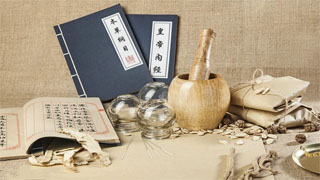
Lidong is the 19th solar term among the 24 solar terms, the first solar term of winter, and also one of the traditional festivals in China. On November 7th or 8th of each year in the Gregorian calendar, the time when the sun reaches 225 degrees longitude is called the beginning of winter. In the "Huainanzi: Astronomical Instructions," it is said that "when frost falls for fifteen days, it means that the hooves are connected, and the autumn equinox is over. Therefore, it is said that there are forty-six days before the beginning of winter, and the plants and trees are dead." During the solar term of the beginning of winter, although the sunshine time gradually begins to shorten, the height of the sun at noon gradually decreases, and the weather gradually tends to be cold. But from the perspective of meteorology and phenology, the hemisphere we are in is the Northern Hemisphere. Due to the continuous release of heat stored by the earth in summer, the Northern Hemisphere is not too cold at the beginning of winter. However, due to the gradual decrease in temperature, plants and trees between heaven and earth begin to wither, dormant insects begin to sleep, and all activities tend to be static. Therefore, it is widely believed among the people that the beginning of winter is the beginning of winter.
During this period, there may be occasional occurrences of mild spring weather, which means that for a few days, the weather will not be so cold and will be a bit warm. However, during the beginning of winter, the cold air in the north of China gradually strengthens and frequently moves towards the south, forming strong winds and cooling, and may be accompanied by rainy and snowy weather.
Meaning of Beginning of Winter
Let's talk about how the "standing" of Lidong came about. The ancient understanding of "standing" is the same as that of modern people, where "standing" means establishing the beginning. How to explain the "winter" of Lidong? In the "Collection and Explanation of the Seventy Two Seasons of the Moon", it is said: "Winter is the end, and all things are collected." This means that during this solar term, all things begin to be collected. All the crops have been harvested and sun dried, and they are still stored in the warehouse. Animals also began to hide and prepare for hibernation. Therefore, the beginning of winter not only represents the arrival of winter, but also signifies the beginning of all things collecting and avoiding the cold.
We know that there are four solar terms in this solar term, namely the beginning of spring, the beginning of summer, the beginning of autumn, and the beginning of winter. These four festivals were very important in ancient Chinese society, so the beginning of winter is also a very important festival. On this day, there are customs of welcoming winter, congratulating winter, and worshiping winter. On this day, the emperor will lead civil and military officials to the sacrificial altar in the northern suburbs of the capital to offer sacrifices. After completion, they will also be given coats and hats. On the day of the beginning of winter, many places still hold ceremonies to celebrate. In our country, there are folk activities such as tonifying winter, nourishing winter, fasting, pickled vegetables, eating cake, eating sugarcane, and so on. Tonifying winter and nourishing winter are both closely related to our traditional Chinese medicine health preservation. Eating cakes, sugarcane, pickles, and pickled vegetables are all related to the seasonal products of the 24 solar terms.
We just mentioned a detail, which is that the emperor led civil and military officials to the sacrificial altar in the northern suburbs of the capital for worship. Everyone think about why it's the north? Not to the east, west, or south, nor in the middle. Why choose north in the east, west, north, south, and center? Because we know that the five directions correspond to the Five Elements, with the east corresponding to spring, the south corresponding to summer, the west corresponding to autumn, and the north corresponding to winter. These four directions correspond exactly to the Five Elements, where the east corresponds to wood, the south corresponds to fire, the west corresponds to metal, and the north corresponds to water. The Five Elements of metal, wood, water, fire, and earth coincide perfectly. The middle corresponds to soil, so we can understand it by looking at the direction. The ancient customs, activities, and rituals all correspond to the Five Elements, so this is a part of my explanation about traditional culture that I inserted here.
To be continued, Culture and Health 2 is even more exciting


